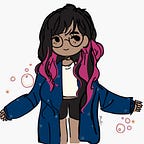We are a people obsessed with unearthing the definitions of the things that make up the world around us. We use them to make up the meaning of the ebb and flow of our experiences, and it’s more than a mere fad. Our intrigue over capturing the essence of an object can be traced back to eons before now — to being a building block that contributed to our cognition being what it’s evolved to be today. But there’s another piece to the puzzle of what made us, well, us — art.
For centuries, philosophers, artists of all kinds, and laypeople have puzzled over what it means to be, live, and love art. Of all the definitions that we’ve collectively tried to pin on this weird and wonderful entity, perhaps the most commonly recurring theme is that of art being associated with great beauty, and evoking a strong emotional response. But that’s not always the case. Take, for example, the Trans Am Totem installation off downtown Vancouver, BC. This piece created by Marcus Bowcott is one that’s neither stereotypically beautiful, nor one that evokes a great emotional response in me. But it does instigate a line of thought that leads itself in wonderous circles around the intersection of Quebec Street and Milross Avenue. Does that mean this doesn’t count as art? Of course not! This leads to the question of whether it’s appropriate to hinge the definition of something so vast on the prescribed ways of perceiving it. My take? I think not.
“All art is but an imitation of nature“
– Seneca, 65 BCE
A second seemingly all-pervasive theme is the relating of art to nature. But this not only carries with it the same issues of defining art based on a prescribed perception of it but also leaves us with the bigger task of defining nature. To carry this argument forward, let’s for a minute pretend like both of those problems have been solved and that we know exactly what the words ‘art’ and ‘nature’ denote every time we speak them (I know I’m asking for the impossible, forgive me for that). This influential idea that art imitates nature was perfectly summed up by the famous stained glass artist Marc Chagall when he said:
“art is an unceasing effort to compete with the beauty of flowers”
Marc Chagall, circa 1935
But not all art is trying to compete with the beauty of flowers, and neither is it always necessarily inferior to the wonder of flowers. To further develop this line of defining art, we might say art works to complete nature, rather than compete with it. This places them side by side, rather than one below the other. But this can be said of anything. As the former-pipsqueak Edward Elric often said, the world exists as a cycle of one thing feeding into the next.
“Art does not reproduce the visible, rather, it makes it visible“
– Paul Klee, 1920 AD
What if we move away from viewing it through the lens of recreating the existing, but rather creating the quasi-existing? See it through the lens of world-building, where we put forward so much as if carving ourselves a reality, different from the one we live in. As if serving as a medium of exchange, from the creator to the ones that experience. For if a brush stroke breezes over a canvas, but no one were to see it leave a trace, did it even graze the surface?
“art is long, life is short”
This quote, often attributed to Hippocrates (circa 425 BCE), is often interpreted to mean that art has a life of its own, one much longer than its creator. And for its life to go on, it relies on the never-ending waves of those who experience it, coming alive with each individual experience. It serves as a reminder of the billions we never met, nor will ever meet, telling us not only that they exist, but also telling us of their existence.
“Art is anything you can get away with“
– Marshall McLuhan, 1964 AD
We enjoy imagining expression as this huge feeling that comes in big waves, really close together. But really, it depends on the person expressing, the emotion and thought expressed, and the person(s) receiving it. Sometimes it’s the articulation of ideas without interference of emotion, and sometimes it’s the exact opposite. But regardless, a Thing Being Expressed counts as expression, does it not?
It’s hard to pin down this slippery, ephemeral thing we call art, but I ask you, isn’t that the point of it? How do we describe something so enormous and expansive that insists on transcending definitions, with a definition without excluding huge chunks of it? Marcel Duchamp famously said:
“what art is, is this missing link… it’s not what you think it is, but the gaps in between it”
Marcel Duchamp, circa 1975
And goddammit, I love that gap. It’s the air between us that we weave the meanings of our worlds with. That by definition falls into a space that cannot be defined, and I think that’s beautiful.
